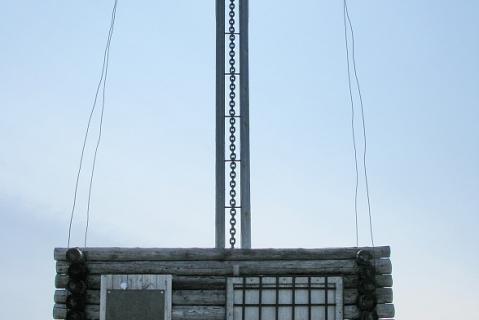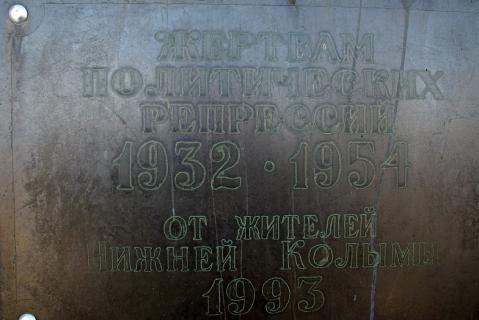In 1932 Dalstroi organised the Kolyma maritime division at the mouth of the river. In November that year prisoners from Sevvostlag began to build the wharves of a seaport in Ambarchik Bay. From 1932 to 1954 a transit camp was located there. Prisoners who died were buried in the outpost cemetery one kilometre from the shore. Each had individual graves and wooden stakes with boards bearing their numbers were placed on the burial.
In 1988 the cemetery was studied by an expedition from the Nizhnekolymsky Museum of The History and Culture of the Peoples of the North. A memorial was placed there in 1993: a stylised barrack wall with a wooden cross. A metal plaque (see photo) carries the inscription: “To the victims of political repression, 1932-1954, from the inhabitants of Lower Kolyma, 1993”.
The Memorial database “Victims of Political Terror in the USSR” lists 1,883 individuals who served time in Sevvostlag. It names 349 who died in captivity and 20 who were shot there.
| Date | Nature of ceremonies | Organiser or responsible person | Participants | Frequency |
|---|---|---|---|---|
|
nk
|
commemorative services
|
nk
|
priests, congregation, staff from polar station, travellers
|
from time to time
|
| State of burials | Area | Boundaries |
|---|---|---|
|
Some grave stakes and crosses have survived; text on the headboards has disappeared
|
not determined
|
not delineated
|
[ Original texts & hyperlinks ]
A Far Northern outpost of the Gulag (compiler G.V. Samoilov), Moscow: Vozvrashchenie, 1993
A. Pavlov, “Setting sail for Ambarchik”, Yakutia (Yakutsk), 25 October 2013
Reply from the Nizhnekolymsky district administration (№ 01-24/420 of 8 April 2014) to a formal enquiry by RIC Memorial (St Petersburg)


